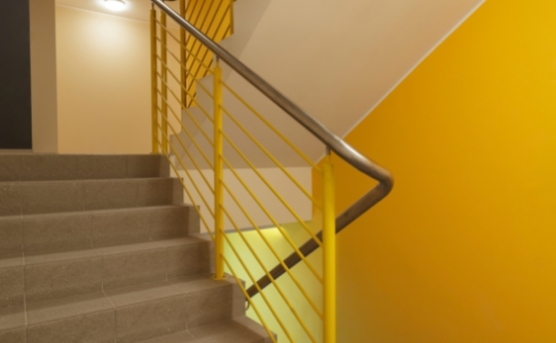Derechos
Disasters and Emergencies
Derechos
According to the National Weather Service, a derecho (pronounced similar to “deh-REY-cho”) is a widespread, long-lived wind storm that is associated with a band of rapidly moving showers or thunderstorms. Although a derecho can produce destruction similar to the strength of tornadoes, the damage typically is directed in one direction along a relatively straight swath. As a result, the term “straight-line wind damage” sometimes is used to describe derecho damage. By definition, if the wind damage swath extends more than 240 miles (about 400 kilometers) and includes wind gusts of at least 58 mph (93 km/h) or greater along most of its length, then the event may be classified as a derecho.
In Iowa, derechos occur every year or two on average. Winds above 85 mph like that of the August 10, 2020, derecho are quite unusual.
While meteorologists can forecast potential severe weather outbreaks a few days in advance, predicting a derecho can be difficult. Meteorologists can look at a radar to better identify a derecho-type event, but this may only provide a few hours notice.
Whenever there is a threat for severe weather in the area, it’s best to stay alert and prepared —whether it’s a derecho or a severe thunderstorm capable of producing damaging wind gusts.

Know what to do before, during, and after a derecho.
Iowa disaster history
2020 August Derecho
A derecho swept across the states of South Dakota, Nebraska, Iowa, Wisconsin, Illinois, Indiana, Michigan, and Ohio on Monday, August 10, 2020, leaving behind widespread and shockingly devastating damage in its wake, hitting central and eastern Iowa the hardest. Millions across the Midwest were affected by wide-scale utility disruptions, residential and commercial property damage, and severe damage to corn and soybean crops. Cedar Rapids was the most severely damaged, suffering a near-complete blackout that lasted for weeks in some areas, widespread and severe property damage, and an estimated loss of at least half of the city’s tree canopy. The derecho caused an estimated $11 billion in damages and spawned a years-long cleanup effort. As of October 2020, it is the most costly thunderstorm in US history.
Video credit: Nick Stewart, Meteorologist and storm chaser for CBS2/Fox 28 news in Cedar Rapids
Fatalities
Measured Wind Gust (MPH)
Million Without Power
$ Billion in Damage

KNOW WHERE TO GO!
BEFORE, DURING, & AFTER A DERECHO
BEFORE A DERECHO
- Know the county in which you live and the names of nearby major cities. Severe weather warnings are issued by county. If you are not near home, know the county where you’re located, in case the weather turns.
- Check the weather forecast before leaving to be outdoors for extended periods.
- Watch for signs of approaching storms.
- If a storm is approaching, keep a NOAA Weather Radio or AM/FM radio with you.
- Postpone outdoor activities if thunderstorms are imminent. This is your best way to avoid being caught in a dangerous situation.
- Check on those who have trouble taking shelter if severe weather threatens. The best thing to do in the event of a derecho is to go someplace safe and protected—high winds and falling trees can be quite dangerous.
DERECHO APPROACHING
If you are inside
- Move to your pre-designated shelter. The designated shelter should be in a basement, storm cellar, or lowest level of the building. If you are at work or school, you should go to the basement or an interior hallway on the lowest level of the building where you are.
- If you can, get under a sturdy piece of furniture.
- Stay away from windows.
If you are outside
- Find a sturdy building and stay away from windows.
- Stay away from trees. Campers or hikers in forested areas are vulnerable to being injured or killed by falling trees. Occupants of cars and trucks also are vulnerable to falling trees and utility poles.
- Get out of boats and away from water. Boaters risk injury or drowning from storm winds and high waves that can overturn boats.
AFTER THE DERECHO
- Pay attention to authorities and weather forecasts for information on whether it is safe to go outside and instructions regarding debris removal.
- Watch for fallen power lines and trees. Report them immediately.